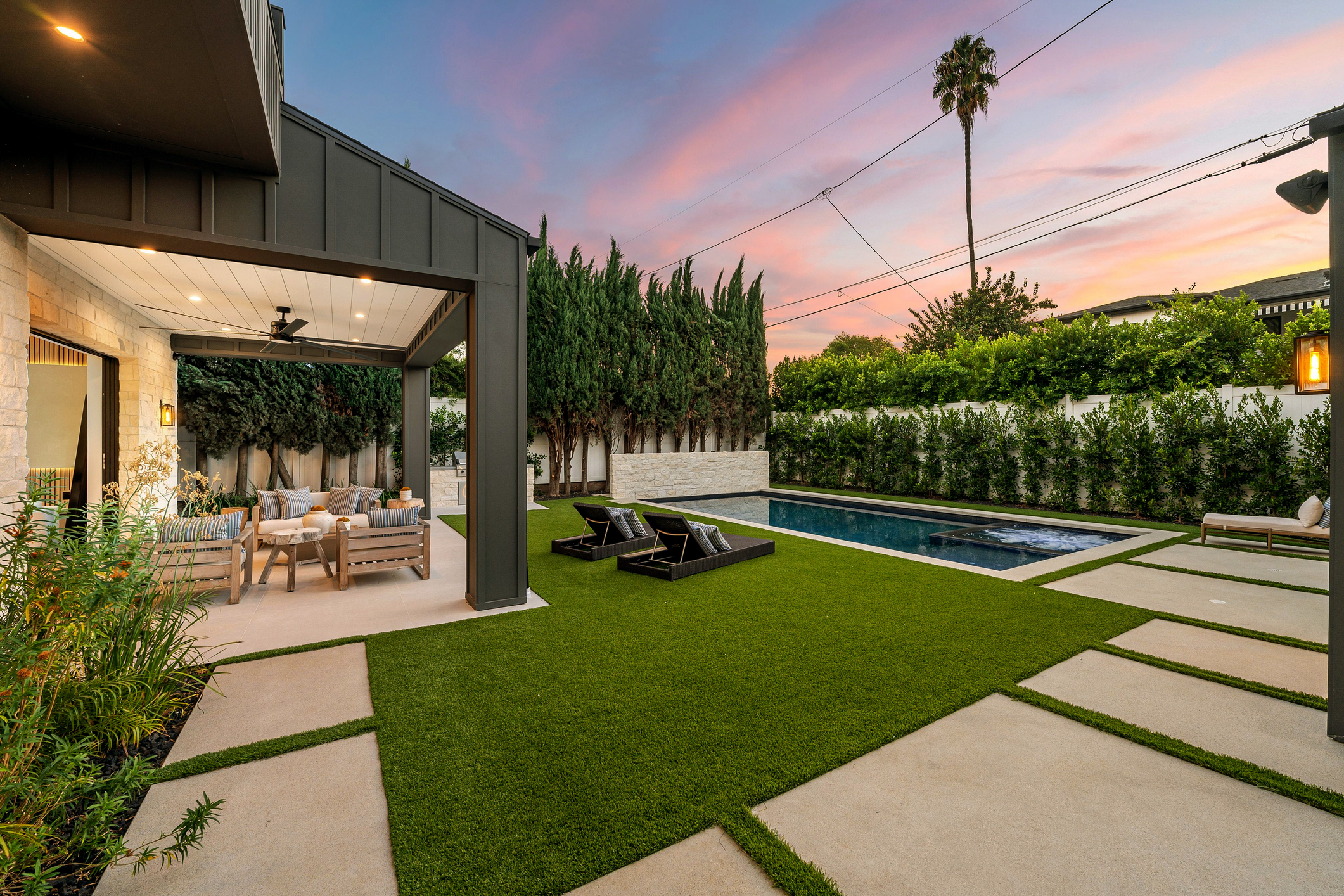In Australian garden design, hardscaping plays a critical role in creating outdoor spaces that are not only beautiful but also highly functional. While softscaping refers to living elements like plants and turf, hardscaping encompasses the use of non-living materials—stone, wood, and water being the most timeless and impactful choices.
These elements help define structure, add visual texture, and introduce tranquil sounds and movement. When thoughtfully combined, stone, wood, and water can dramatically enhance a garden’s aesthetic, usability, and even property value.
Here are five expert tips from Luma Landscapes on how to harmoniously incorporate these materials into your outdoor space.
1. Use Stone for Structure and Definition
Stone is a foundational element in many garden designs. Its natural durability and wide range of textures make it ideal for adding structure and sophistication.
- Create garden pathways using natural stone to guide movement and connect key areas of your outdoor space.
- Construct retaining walls to manage sloped landscapes, create planting tiers, or simply add visual interest.
- Install patios or courtyards using materials like sandstone or bluestone to provide functional entertaining areas.
- Choose low-maintenance stone options that weather beautifully and require minimal upkeep.
- Surround stone features with lush greenery to soften their appearance and create a cohesive look.
Incorporating these stone landscaping ideas helps form the backbone of a durable and attractive garden.
2. Integrate Wood for Warmth and Functionality
Wood brings warmth and a natural feel that balances the harder textures of stone. It’s a versatile material that suits many garden styles, from coastal to contemporary.
- Build timber decking to extend your living space outdoors and create a relaxed spot for dining or lounging.
- Add pergolas or trellises to introduce vertical structure and provide dappled shade during warmer months.
- Use timber fencing or screening for privacy while keeping a soft, organic look.
- Opt for sustainable outdoor materials like recycled hardwoods or responsibly sourced timber to ensure longevity and reduce environmental impact.
- Combine wood with stone features or water elements for a seamless, well-rounded design.
Whether you’re looking for classic wooden decking ideas or inspired garden pergola designs, wood can be both functional and beautifully integrated.
3. Enhance the Space with Water Features
Water introduces movement, sound, and calm into your garden. Even a small feature can become a standout element that boosts relaxation and biodiversity.
- Install a compact backyard fountain or small waterfall to bring soothing sound and a dynamic focal point.
- Incorporate a pond to support local wildlife and enhance your garden’s ecosystem.
- Consider a reflecting pool if your style leans more modern and minimalist.
- Combine water with natural stone to create tranquil, organic designs that feel timeless.
- Choose low-maintenance water systems and native aquatic plants to keep things sustainable.
If you’re exploring DIY water feature ideas, think about how water can interact with surrounding elements to elevate your outdoor experience.
4. Achieve Balance with Strategic Placement
Achieving the right balance between stone, wood, and water comes down to thoughtful layout and spatial planning.
- Consider the proportion of each element to ensure no single material dominates the space.
- Use stone to define structure, wood to add comfort and warmth, and water to introduce a fluid, calming dynamic.
- Avoid overcrowding. Leave breathing space for pathways, seating, and plant beds to encourage flow and relaxation.
- Incorporate greenery throughout to soften hard edges and create a natural transition between elements.
- Designate zones for different uses—entertaining, relaxing, or quiet reflection—to maximise the functionality of your garden.
This approach to outdoor space planning ensures a cohesive design that’s both practical and visually engaging.
5. Lighting & Final Touches for a Complete Look
Lighting is the finishing touch that ties your entire garden design together. It enhances safety, draws attention to focal points, and adds atmosphere after dusk.
- Place pathway lights along stone walkways for safe movement and visual interest.
- Highlight pergolas, trellises, or trees with uplights to add depth and shadow play.
- Soft lighting around water features enhances the sparkle and motion of water after dark.
- Opt for solar-powered fixtures to reduce energy use and maintenance.
- Use festoon lights or lanterns to bring a cosy, inviting vibe to entertaining zones.
Incorporating smart garden lighting ideas ensures your space is just as appealing at night as it is during the day.
Conclusion
Blending stone, wood, and water into your garden design creates a multidimensional space that’s as practical as it is beautiful. These elements offer strength, comfort, and serenity—hallmarks of a well-balanced hardscape landscape.
Whether you’re after a total backyard transformation or subtle upgrades to your current layout, the right mix of hardscape materials can dramatically enhance your outdoor space. At Luma Landscapes, we specialise in crafting bespoke garden designs tailored to your lifestyle and location.
Contact us today to schedule your consultation, or view our range of projects to see how we can transform your landscape. Let’s work together to transform your garden into a beautiful, functional outdoor sanctuary.




